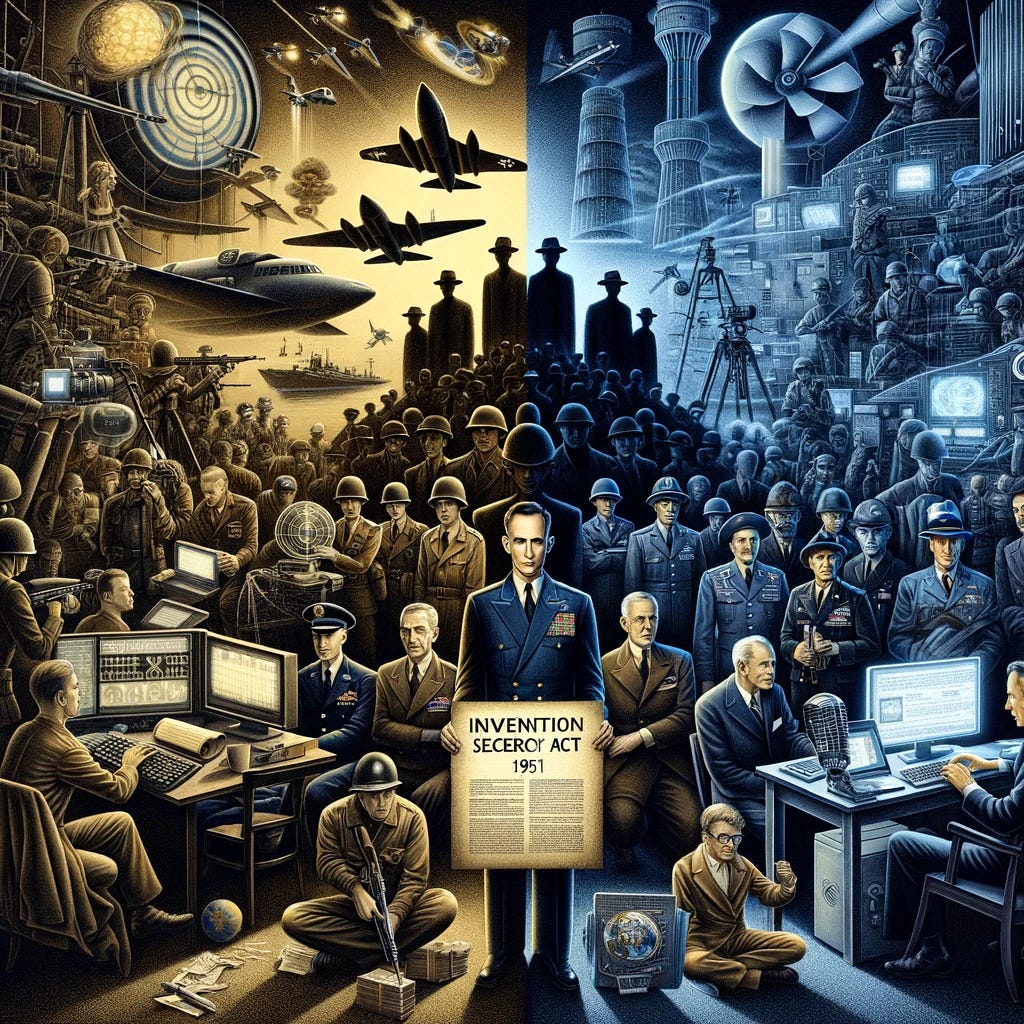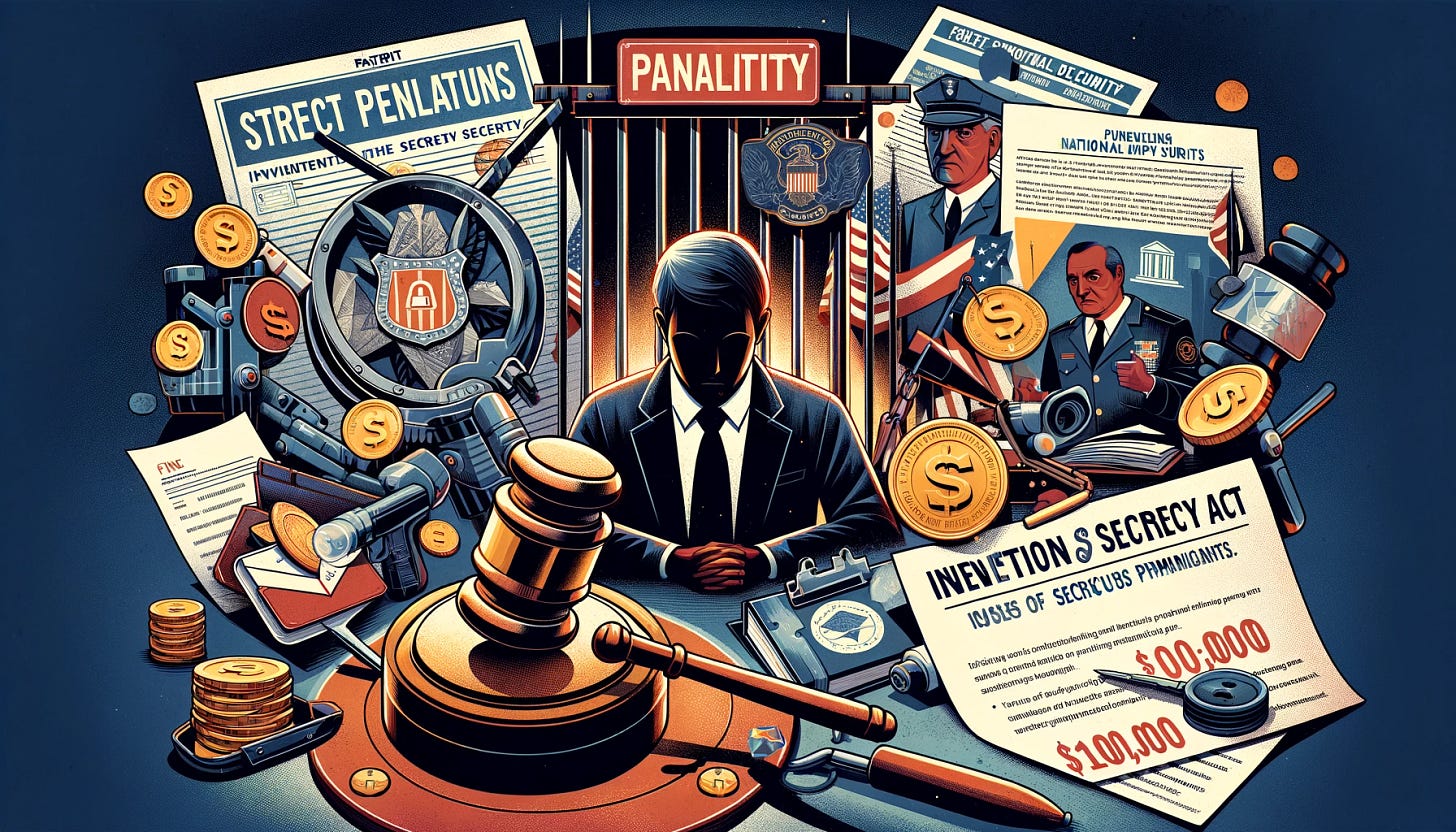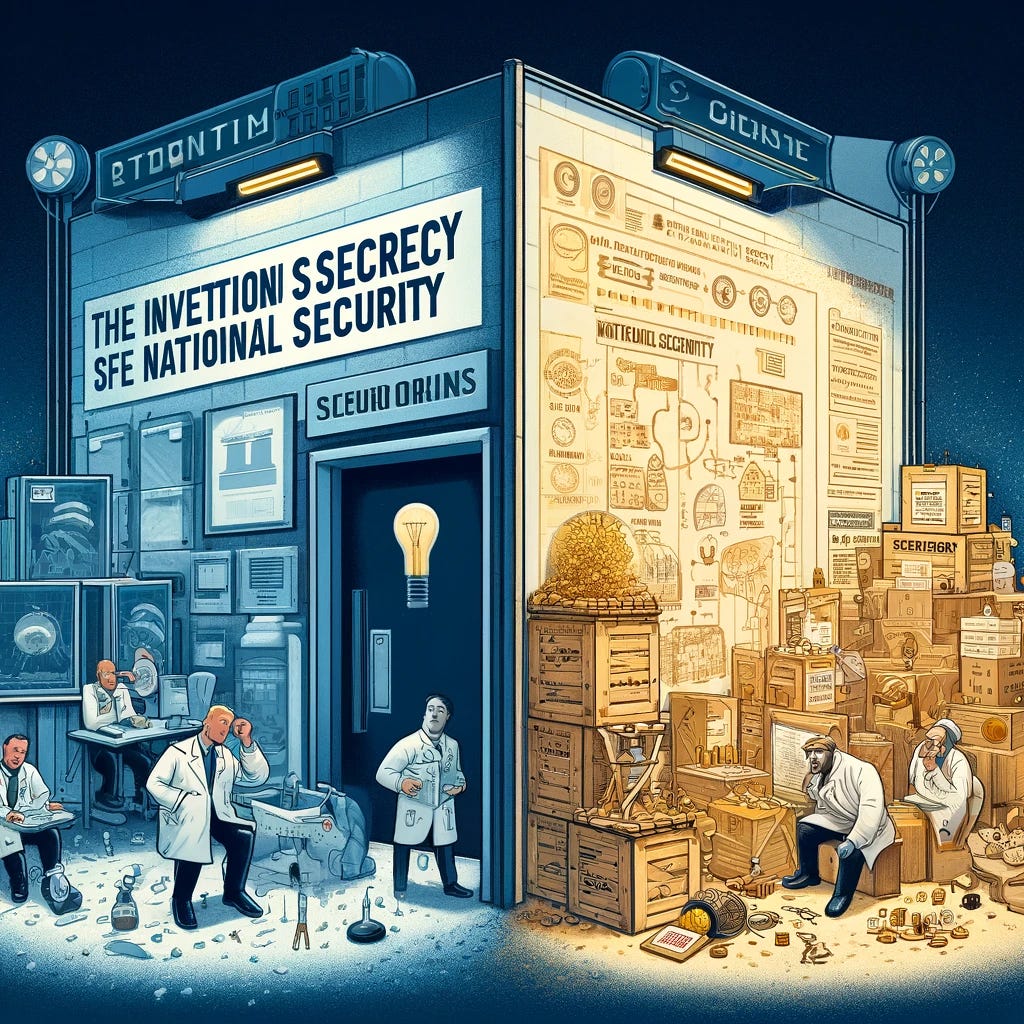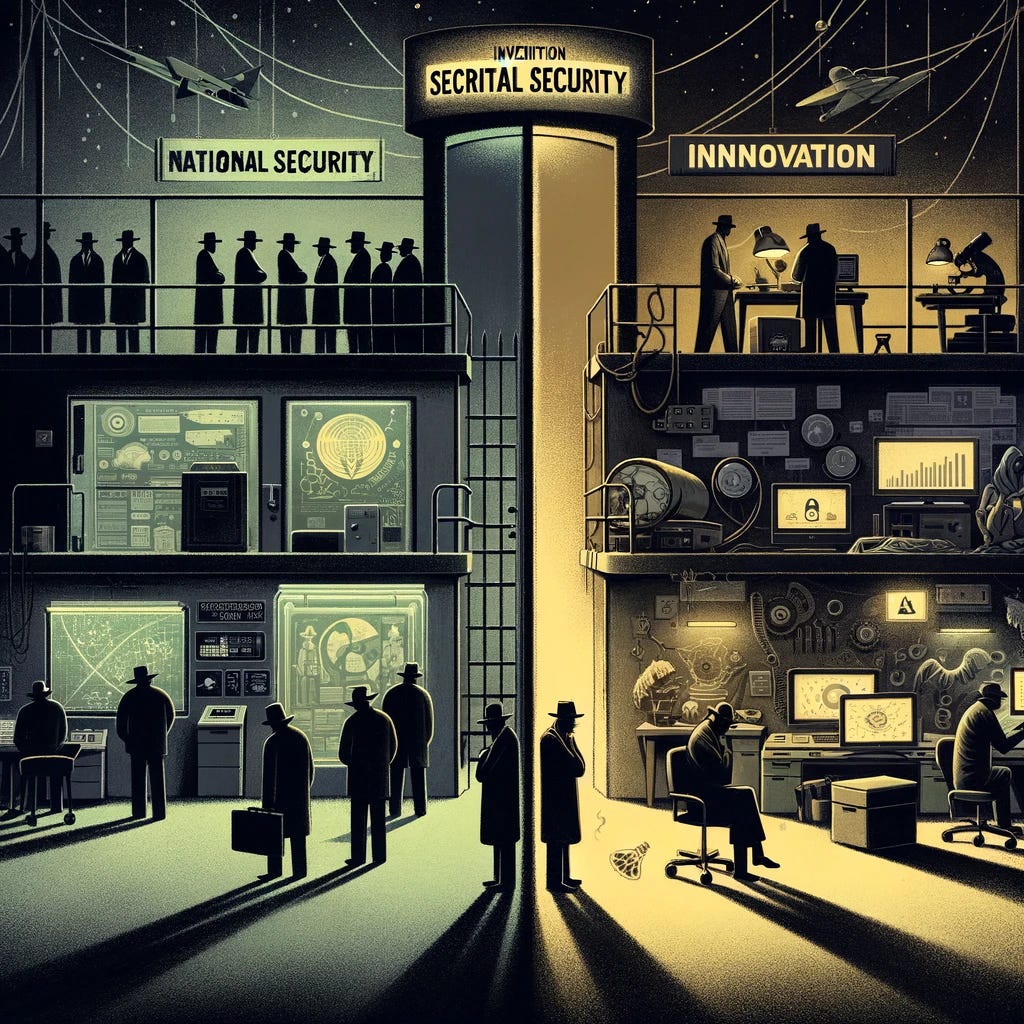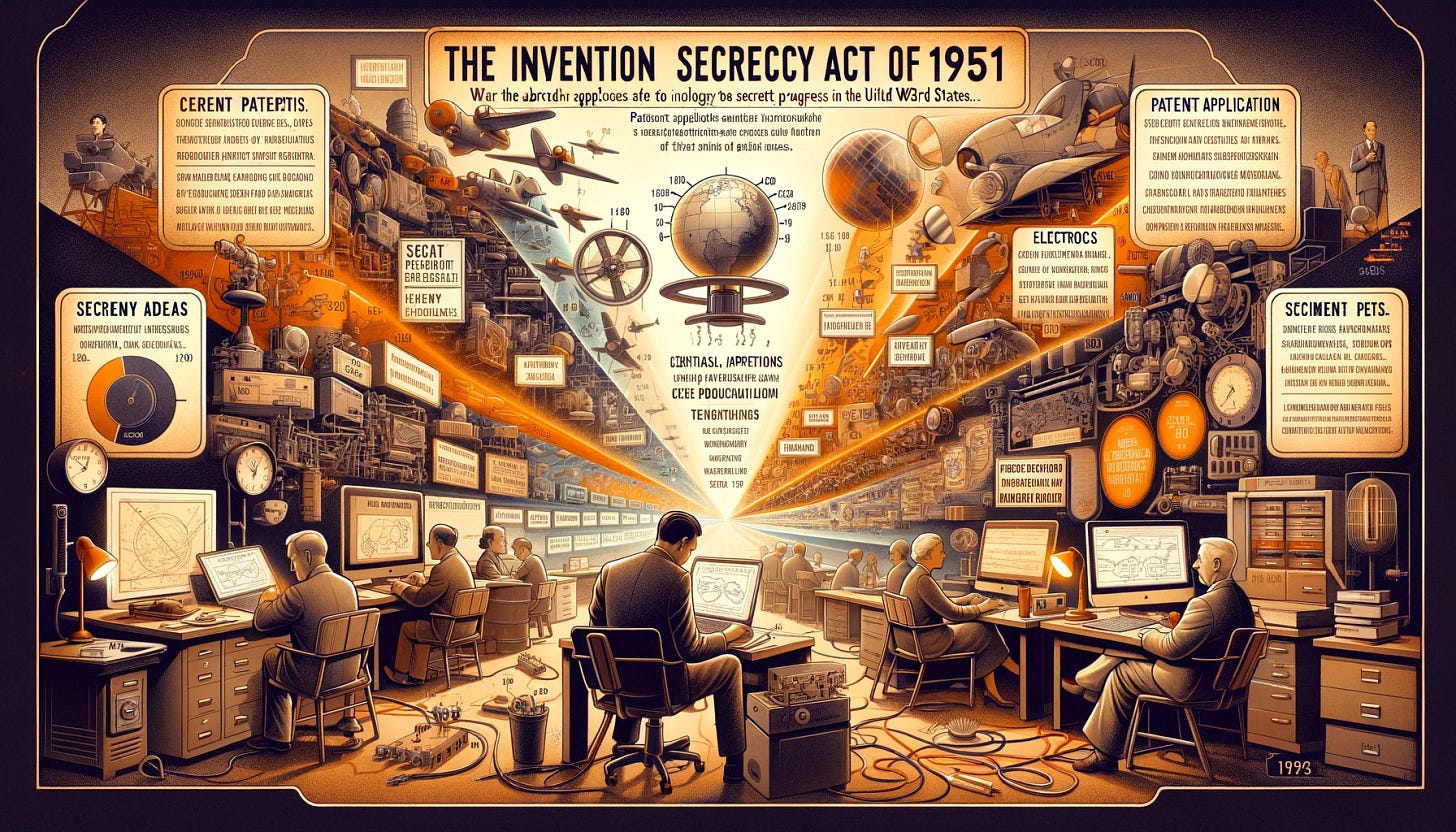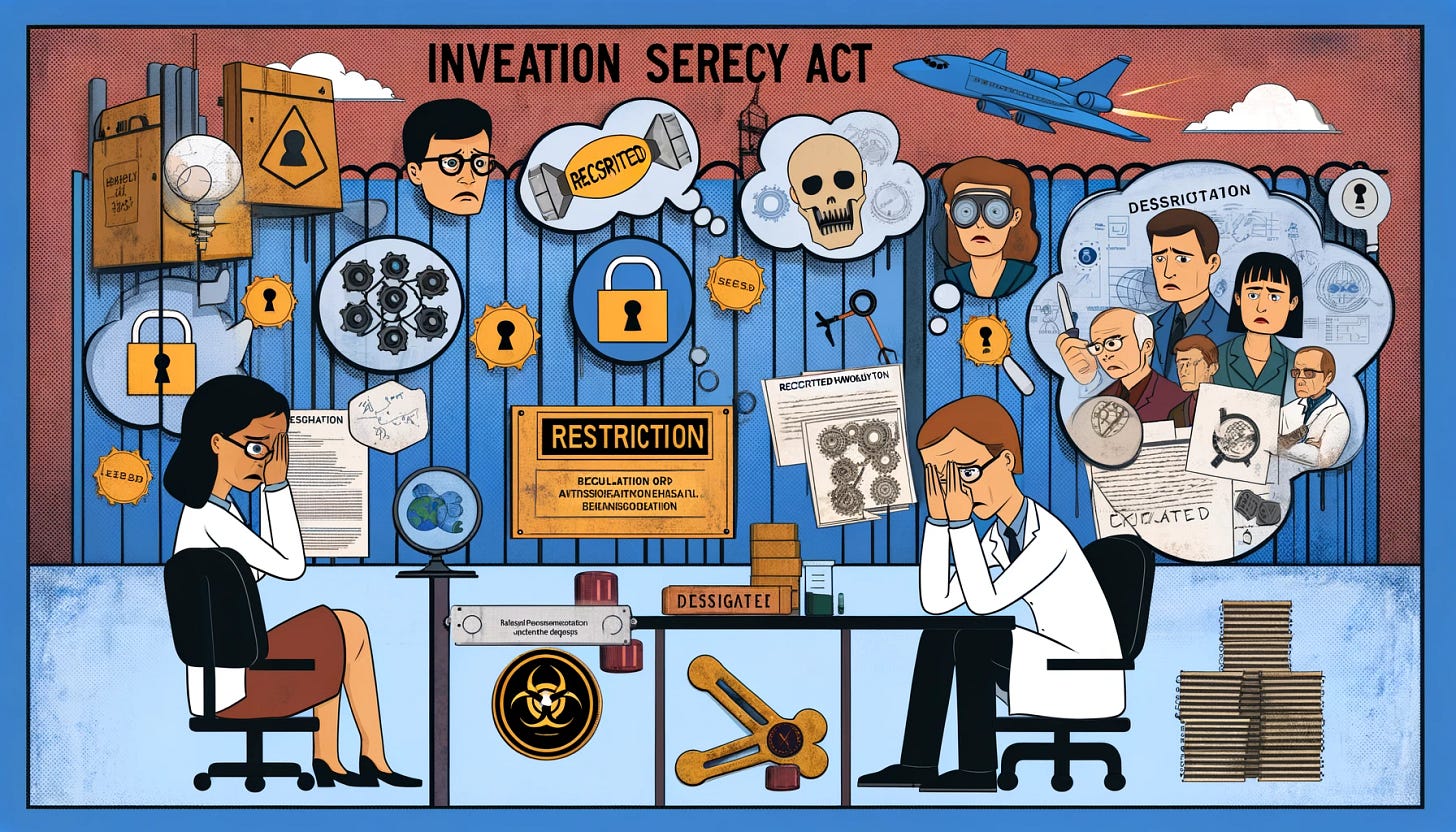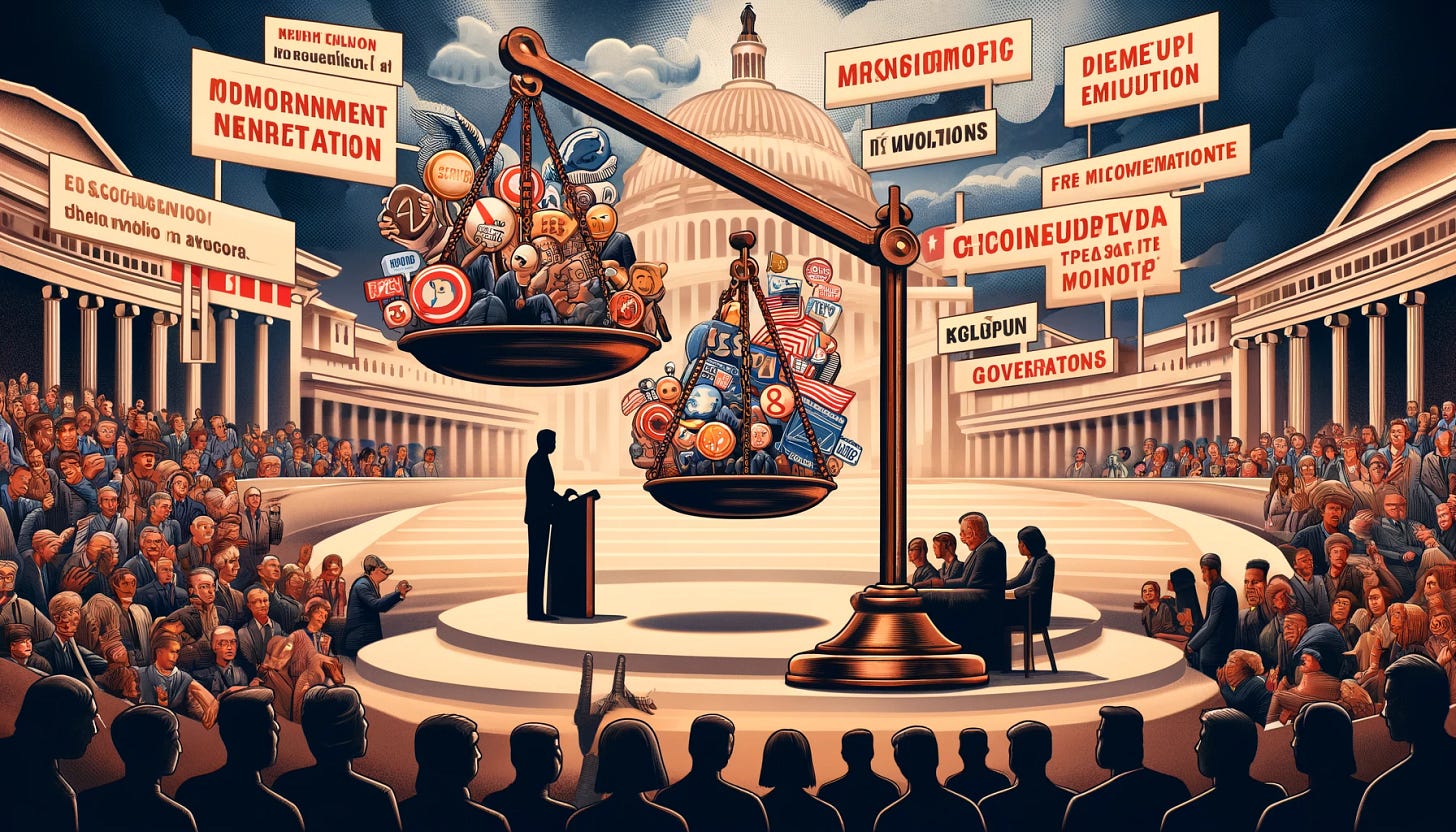The Invention Secrecy Act of 1951: A Historical and Legal Analysis - Part 2
Administration and Enforcement
Role of the USPTO
The USPTO played a central role in the administration and enforcement of the Invention Secrecy Act. The agency was responsible for screening patent applications, issuing secrecy orders, and maintaining the secrecy of inventions that posed a risk to national security. The USPTO also handled requests for compensation from inventors and managed the appeals process for those subject to secrecy orders (Indiana Law Repository).
To implement the Act, the USPTO created a new internal office dedicated to managing the secrecy orders. This office worked closely with other government agencies, including the Department of Defense, to identify inventions that required secrecy orders and to ensure that the orders were enforced (NBER).
Penalties for Non-Compliance
The Invention Secrecy Act included strict penalties for non-compliance. Inventors who violated the terms of a secrecy order could face severe consequences, including the loss of patent rights, imprisonment for up to two years, and fines of up to $10,000. The Act also prohibited the filing of patent applications in foreign countries for inventions subject to secrecy orders (NBER).
These penalties were intended to ensure that inventors and firms adhered to the secrecy orders and did not disclose sensitive information that could compromise national security. The threat of severe penalties also served as a deterrent to potential violations, helping to maintain the integrity of the secrecy program (NBER).
Historical Context and Legacy
World War II and the Cold War
The Invention Secrecy Act of 1951 was shaped by the historical context of World War II and the early Cold War period. During World War II, the U.S. government implemented a comprehensive secrecy program to protect sensitive inventions from being disclosed to enemy forces. This program was seen as essential to maintaining a technological edge in the war effort (NBER).
The end of World War II did not diminish the perceived need for secrecy, as the onset of the Cold War brought new concerns about the potential for technological espionage and the need to protect national security. The Invention Secrecy Act of 1951 was a response to these concerns, providing a peacetime framework for managing the secrecy of inventions that could be detrimental to public safety or defense if disclosed (NBER).
Long-Term Effects on Innovation
The long-term effects of the Invention Secrecy Act on innovation and technology development are complex. On one hand, the Act was effective in keeping sensitive technology out of public view and preventing its disclosure to potential adversaries. This was seen as a critical component of national security during both World War II and the Cold War (NBER).
On the other hand, the Act's restrictions on the publication and commercialization of inventions had a broader impact on the innovation system. By impeding follow-on innovation and delaying the diffusion of new technologies, the Act may have slowed technological progress in certain areas. The compulsory secrecy also discouraged some inventors and firms from pursuing certain lines of research, potentially limiting the overall scope of innovation (NBER).
Modern Implications and Relevance
Contemporary Secrecy Orders
The Invention Secrecy Act remains in effect today, and the USPTO continues to issue secrecy orders on patent applications that pose a risk to national security. However, the frequency of these orders has decreased significantly since World War II. Between 2005 and 2015, the USPTO issued 1,171 secrecy orders among 5.8 million applications, a much lower rate than during the war (NBER).
The modern use of secrecy orders reflects ongoing concerns about national security and the need to protect sensitive technologies. For example, there have been discussions about the potential use of compulsory secrecy to protect U.S. advantages in the race for COVID-19 treatments and vaccines (NBER).
Balancing Security and Innovation
The Invention Secrecy Act highlights the ongoing challenge of balancing national security with the need to promote innovation and technological progress. While the Act provides a mechanism for protecting sensitive inventions, it also imposes restrictions that can impede the commercialization and diffusion of new technologies. This tension remains relevant today, as policymakers and inventors navigate the complex landscape of intellectual property and national security (NBER).
In conclusion, the Invention Secrecy Act of 1951 represents a critical component of the U.S. government's efforts to protect national security through the management of sensitive inventions. Its implementation and impact on innovation continue to be relevant in the modern context, reflecting the ongoing need to balance security concerns with the promotion of technological progress.
Impacts and Criticisms of the Invention Secrecy Act
Restriction on Technological Progress
The Invention Secrecy Act of 1951 has had significant implications for technological progress in the United States. One of the primary criticisms is that secrecy orders can delay or even prevent the dissemination of innovative ideas. During World War II, the U.S. Patent and Trademark Office (USPTO) issued secrecy orders on over 11,000 patent applications, primarily in areas critical to the war effort such as radar, electronics, and synthetic materials (NBER). These orders were abruptly rescinded at the end of the war, which provided a unique opportunity to study the effects of such secrecy.
Research by Daniel P. Gross indicates that compulsory invention secrecy was effective at keeping sensitive technology out of the public domain but had the unintended consequence of reducing and delaying follow-on inventions (NBER Working Paper). This delay in the dissemination of technological knowledge can hinder the overall pace of innovation, as other inventors are unable to build upon these secret inventions.
Impact on Commercialization
The restriction on the disclosure of inventions also affects their commercialization. When inventors are unable to share their innovations, it limits the potential for these inventions to be developed into marketable products. The secrecy orders issued during World War II, for example, restricted the commercialization of new technologies, as inventors were prohibited from disclosing their inventions or filing patents in foreign countries (NBER Digest).
This restriction can have long-term economic impacts. A study found that patents with longer secrecy terms were less likely to be cited by future patents and, when cited, were cited more slowly. This was particularly true for patents from firms involved in R&D for the war effort, which were sometimes allowed to share information on otherwise-secret inventions to further contract work (NBER Working Paper). The lack of commercialization opportunities can reduce the economic returns on innovation, discouraging future investment in R&D.
Effects on Research and Development
The Invention Secrecy Act also has implications for research and development (R&D) activities. The secrecy orders can create a barrier to the free flow of scientific information, which is essential for collaborative research and interdisciplinary knowledge exchange. A case study on the aerospace industry found that national security policies, including the Invention Secrecy Act, constrained collaboration and interdisciplinary exchange of knowledge, which are critical sources of technological innovation (Eastern Michigan University).
The study identified several factors that likely impede technological innovation in the aerospace industry, including policy constraints such as the Invention Secrecy Act and Export Control Regulations, funding constraints, and organizational culture and ethnocentrism. These constraints can create a fractious atmosphere, further limiting access to and sharing of restricted or classified information by academia, industry, government, and private researchers.
Legal and Policy Criticisms
The Invention Secrecy Act has faced significant legal and policy criticisms over the years. One of the main criticisms is the lack of clarity and consistency in the definition, interpretation, and implementation of national security policies. This lack of clarity can lead to actions by presidential administrations and federal agencies that further limit access to and sharing of restricted information (Eastern Michigan University)
In recent years, there have been discussions in Congress about expanding secrecy orders in light of ongoing concerns over intellectual property theft and forced technology transfer. However, these proposals have faced strong opposition from powerful lobbies, including the American Bar Association, and have ultimately failed (Harvard Business School). The opposition argues that expanding secrecy orders could further hinder technological progress and innovation.
Modern Implications and Relevance
Despite the criticisms, secrecy orders are still issued today under the authority of the Invention Secrecy Act of 1951, albeit at a lower frequency than during the war. The USPTO continues to issue secrecy orders on inventions considered a security risk, especially those related to nuclear energy (NBER Working Paper). In 2012, the USPTO solicited public comments about the feasibility of expanding secrecy orders to "economically significant" patents, motivated by recurrent theft of U.S. intellectual property by foreign firms and governments. This request elicited strong negative reactions from several legal trade groups, whose concerns included the potential negative impact on innovation (NBER Working Paper).
The experience from World War II suggests that while secrecy orders can be effective at keeping sensitive technology out of the public view, they also have significant consequences for technological progress. The balance between national security and innovation remains a critical issue in ongoing policy debates. The FBI has identified Chinese corporate espionage as one of the most severe counterintelligence threats facing the United States today, highlighting the need for measures to protect U.S. inventions against foreign IP theft (NBER Working Paper).
Conclusion
The Invention Secrecy Act of 1951 has had far-reaching impacts on technological progress, commercialization, and research and development. While it has been effective at keeping sensitive technology out of the public domain, it has also delayed and reduced follow-on inventions, restricted commercialization, and constrained collaborative research. The legal and policy criticisms highlight the need for clarity and consistency in national security policies. As the balance between national security and innovation continues to be a critical issue, the implications of the Invention Secrecy Act remain highly relevant in today's context..





